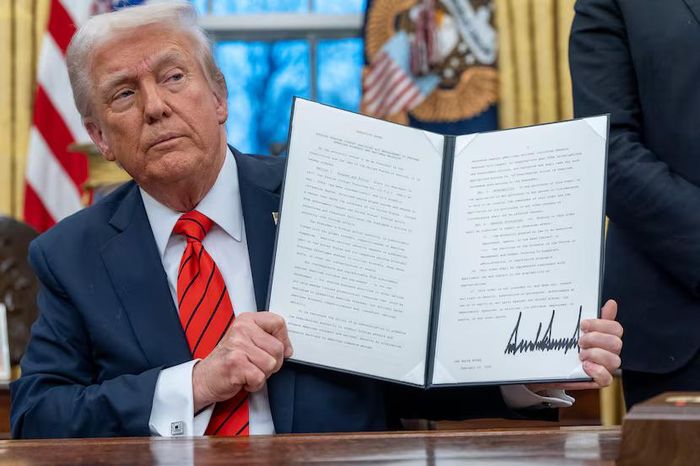On February 11th at 11 AM (Vietnam time), U.S. President Donald Trump officially signed an order to impose a 25% tariff on all aluminum and steel products imported into the United States, effective March 4th. This announcement follows Trump’s declaration of his intention to implement these tariffs on February 9th.
The President emphasized that “there will be no exemptions or waivers” in this new tariff regime, and hinted at the possibility of increasing the tariffs further to boost domestic manufacturing and bring more jobs back to America.
Additionally, Trump introduced new regulations requiring that imported steel and aluminum must be “melted and poured” in North America to limit the influx of steel from China into the U.S.

During his first term (2017 – 2021), Trump had already imposed a 25% tariff on steel and a 10% tariff on aluminum. However, he later exempted certain trading partners, including Canada, Mexico, and Brazil. Former President Joe Biden expanded these exemptions to include the United Kingdom, Japan, and the European Union (EU).
With the new tariff decision, countries that previously enjoyed exemptions on aluminum and steel imports into the U.S. will no longer benefit from these privileges.
White House Trade Advisor Peter Navarro stated that this move is not merely a “trade action” but a strategic effort to strengthen America’s economic security.
“The new 2.0 version of the steel and aluminum tariffs will put an end to foreign dumping, stimulate domestic manufacturing, and protect the steel and aluminum industries as vital pillars of the U.S. economy and national security,” Navarro explained. “This is not just about trade; it is about ensuring that America never has to rely on foreign nations for critical industries like steel and aluminum.”
According to the American Iron and Steel Institute (AISI), 23% of the total steel consumed in the U.S. in 2024 will be imported, amounting to 28.8 million tons, a 2.5% increase from 2023. Most American businesses import steel from Canada, Brazil, Mexico, and South Korea.
The following chart shows imported aluminum supply (in million tons) into the U.S. for 2024. (Source: U.S. Department of Commerce)

Regarding aluminum products, data from the U.S. Department of Commerce indicates that the U.S. will import approximately 5 million tons of aluminum in 2024, with Canada holding over 60% market share, followed by the United Arab Emirates with 6%.
President Trump has also mentioned that he is considering imposing additional tariffs on imported automobiles, pharmaceuticals, and computer chips.
Previously, Trump had signed an order to impose tariffs on most goods imported from Mexico, Canada, and China. Specifically, energy imports from Canada will incur a 10% tariff, while the same goods from Mexico will be taxed at 25%. Other goods from Mexico and Canada will face a 25% tariff, and all imports from China will be subject to an additional 10% tariff, effective February 4, 2025.
However, just before these tariffs were set to take effect, the President agreed to temporarily suspend the tariffs on Canada and Mexico following a deal to tighten anti-smuggling and immigration controls with those countries.
Duy Quang
